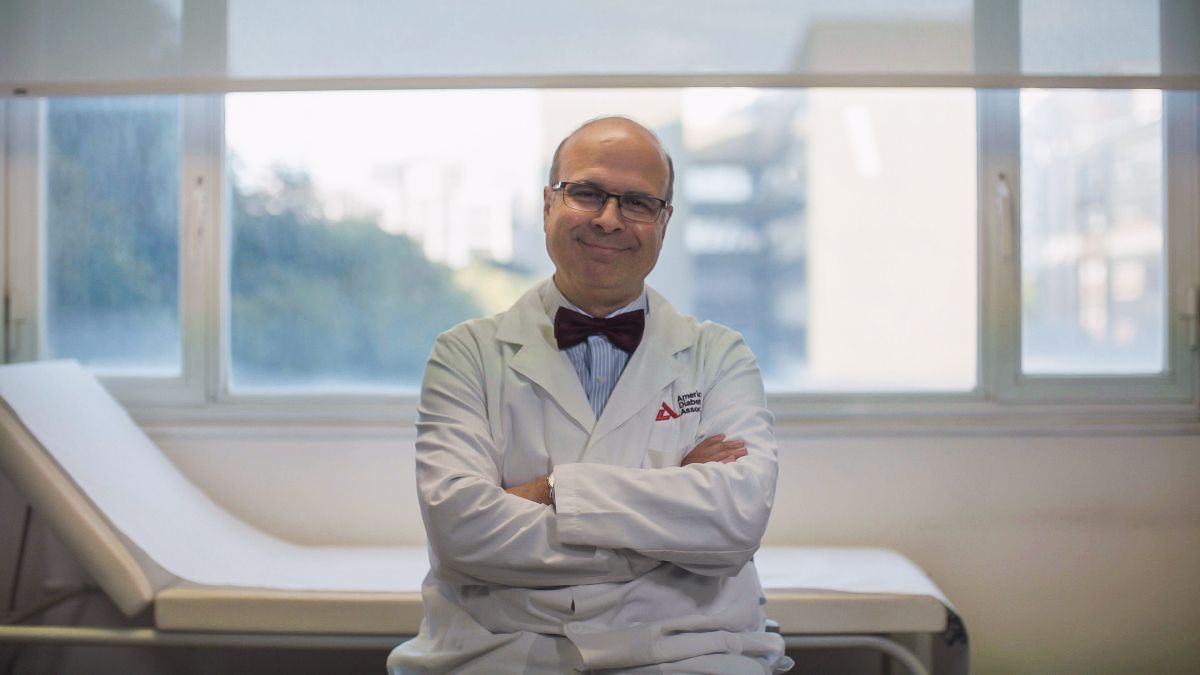
Most people know roughly speaking What does an endocrinologist do? What is the function of the Spanish Diabetes Society?
The SED is a scientific society made up of professionals interested in research and treatment of a chronic disease such as diabetes. It is transversal, including not only endocrinologists, cardiologists or family medicine doctors, but also nursing professionals, psychologists and even engineers interested in different aspects of the disease.
Which has evolved better in recent decades: type 1 or type 2 diabetes?
During the early years of endocrinology and EDS, the focus was on type 1 diabetes and the evolution of insulins required by patients. However, in the last 15 or 20 years, drugs have appeared that have completely revolutionized the treatment of type 2 diabetes by reducing cardiovascular risk in patients and achieving weight loss never seen before.
How important is weight loss in the disease?
It is key because it has an impressive impact on glycemic control and allows, among other things, to reduce the use of drugs for the treatment of hypertension, improve the functionality of patients and respiratory problems in those with sleep apnea. That is why in the last 15 years diabetes conferences have talked more about type 2, which does not mean that type 1 is not still important.
How many people are affected by type 2 diabetes in Spain?
Among the diseases related to metabolism, it is undoubtedly one of the most prevalent, along with obesity. In fact, the two go hand in hand. In Spain, it affects 14% of adults over 18 years of age.
Why do prevention plans systematically fail?
We can summarise this in three factors. Firstly, we fail to diagnose the disease early. I often repeat this to my patients: the best treatment for type 2 diabetes is to prevent it from appearing. The pathophysiological alterations that underlie the disease occur before we have blood sugar levels above 126 mg/dl (the value with which the disease is diagnosed). If we treated these people in the prediabetes stage, we would prevent them from progressing to type 2 diabetes.
What other factors influence?
Secondly, in most patients it usually appears in a non-symptomatic way. It is common for a person to think: if it doesn’t hurt, nothing is wrong with me. Many times the patient themselves do not give it any importance when they go to the doctor and are told that their glucose level is a bit high. This is a key aspect in the failure of the treatments we use for diabetes.
What is the last factor?
It has to do with the fact that we are talking about a disease that progresses. The deterioration of beta cells (they produce insulin, the hormone that controls glucose levels) causes hyperglycemia to appear in the patient at a given moment. If we do not intervene vigorously from the beginning, the stress to which the beta cell is subjected causes a progressive deterioration of its functionality.
What effects does this deterioration have?
As the months go by, the patient who was controlled with one drug needs two, and after four or five years may need insulin. In this way, a very harmful therapeutic inertia is created.

Do you think the health effects of diabetes are known?
No. In the US, it has been called the “silent killer” for years, because it can kill without you even realizing it. If you haven’t had an early diagnosis or had your checkups, it can reveal a serious health problem. There are people who come in with angina and are then diagnosed with diabetes. This should not happen.
Did the pandemic increase the number of cases like the one you describe?
After covid-19 we have found ourselves with a tsunami of new patients. For all these reasons I have mentioned, one of the objectives I have set myself as president of the SED is to improve the communication of the disease to society. Diabetes should not be taken as a trivial disease, but rather it can have serious consequences. In addition, it is responsible for a large part of health expenditure.
How does poor disease control affect life expectancy?
Studies suggest that patients with both type 1 and type 2 diabetes experience a loss of years of life. It is estimated that a person with the most common form, type 2, can lose up to six years of life compared to a person who does not suffer from the disease.
How can life expectancy be extended?
The data I was talking about are based on the progressive deterioration of glycemic control and that is something that can be combated. Early diagnosis campaigns must be encouraged, and even if the disease is not very symptomatic, it is important to continue glycemic control campaigns, because early diagnosis of a complication allows it to be treated easily and can even be reversed.
How important is it to break with the therapeutic inertia that I mentioned earlier?
Combating it is essential. Intensifying treatments in time improves the life expectancy and quality of life of patients and saves money for the health system. It should be noted that an amputation or entering dialysis, two of the most common complications, cost a lot of money.
In some countries patient associations are very important. What role can they play?
Traditionally, they have provided services, but they have not claimed their rights. This is changing. The Spanish Diabetes Federation (FEDE), which brings together associations, is very present in the decisions that health authorities are making. Both my predecessor and I actively collaborate with them and we want to promote initiatives to achieve equity in access to new therapies and new diagnostic methods. I encourage patients to join associations because they can be very powerful.
The SED recently requested that the National Health System provide dental care to patients. Why is this important?
It is an initiative of the Spanish Society of Periodontology (SEPA) with which we have collaborated because it is an unknown problem. Periodontal disease is more common in people with diabetes. But not only that, patients with this problem have worse glycemic control. Promoting oral hygiene and identifying these problems early also prevents tooth loss.
If obesity and type 2 diabetes continue to grow, why are more forceful measures not taken?
This is a key point. We know the important role that obesity, or adiposity as we now call it, plays in the onset and progression of the disease. Combating adiposity would reduce the incidence of type 2 diabetes and would also reduce the progression in those who already have it. Therefore, it is a critical issue, a major health problem.
Are health authorities aware of the scale of the problem?
There is a lack of a decisive health policy for the treatment of adiposity, which is crucial in the prevention of type 2 diabetes. The good news is that the debate has been raised and there will be a lot of talk about this in the coming months, because we already have drugs capable of reducing a patient’s weight by up to 25%.
Why are they not funded by the National Health System?
The prevalence of adiposity in the general population is enormous, as is the case in adolescence and childhood. The investment that would have to be made to treat these patients would be astronomical, because the drugs are very expensive and the Administration does not want to finance them. It is not taken into account that with them a weight loss is achieved only slightly less than that achieved with bariatric surgery (30%) and the alteration of the anatomy of the digestive tract that occurs in the intervention is avoided.
Two very different diabetes: type 1 and type 2
In practice, diabetes includes two very different diseases. “Type 1, although it can appear at any age, usually occurs in younger people. The characteristic is that their body does not produce insulin and they need to be administered insulin to survive,” says the president of the SED.
Type 2 is the most common type, accounting for around 90% of all diabetes cases, “and is characterised by the fact that patients may need insulin at some point in the process, but many begin with a treatment that includes, above all, advice on diet and increasing physical activity, along with oral or injectable drugs, but not insulin.”
Francisco Javier Ampudia adds that “the treatment helps them to improve control of the disease and to reduce weight, one of the main problems.” In relation to the prognosis, type 2 presents a worse profile “because it is associated with much more serious cardiorenal diseases,” he points out.

